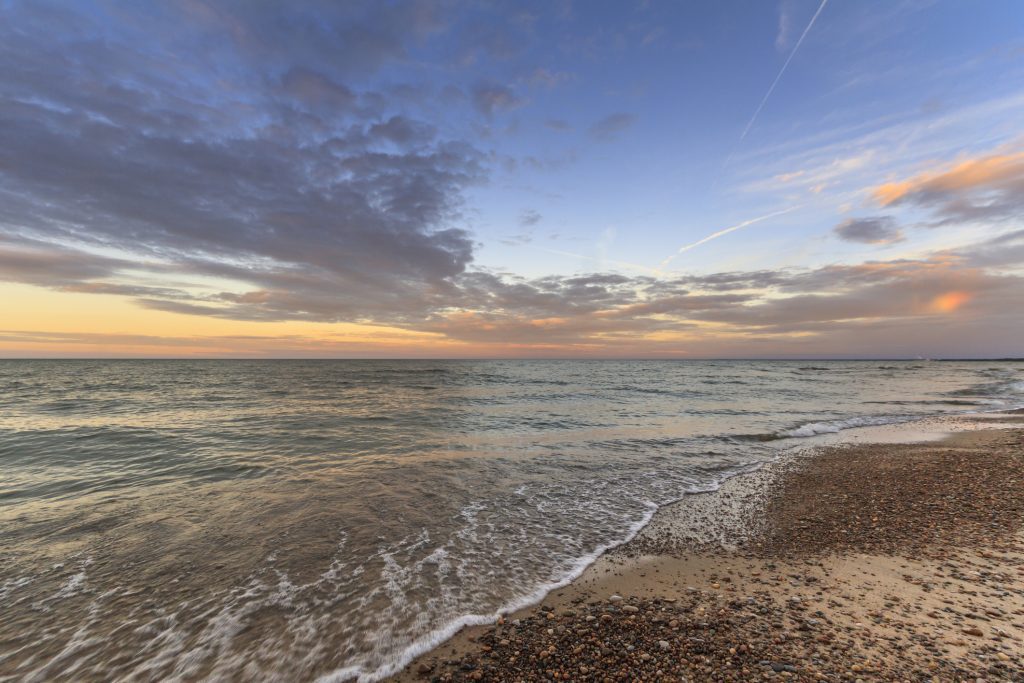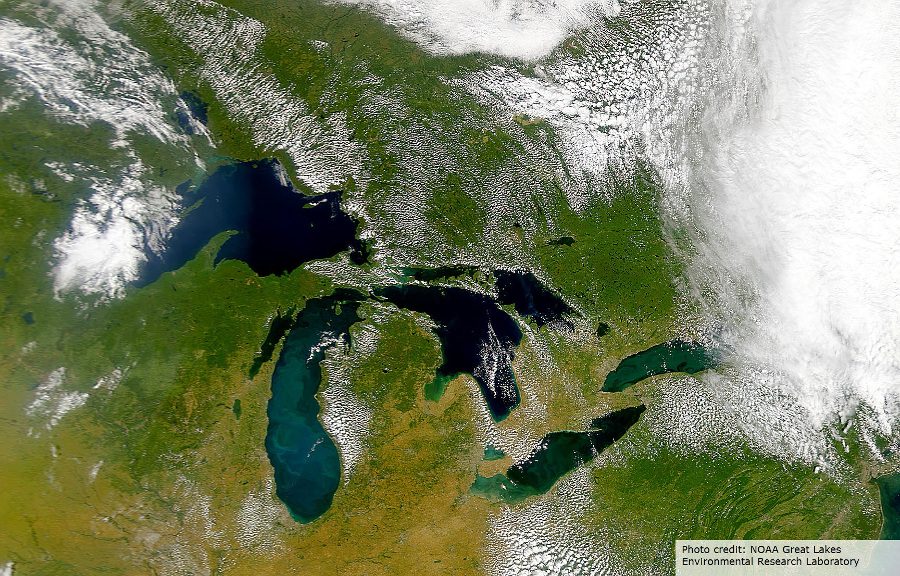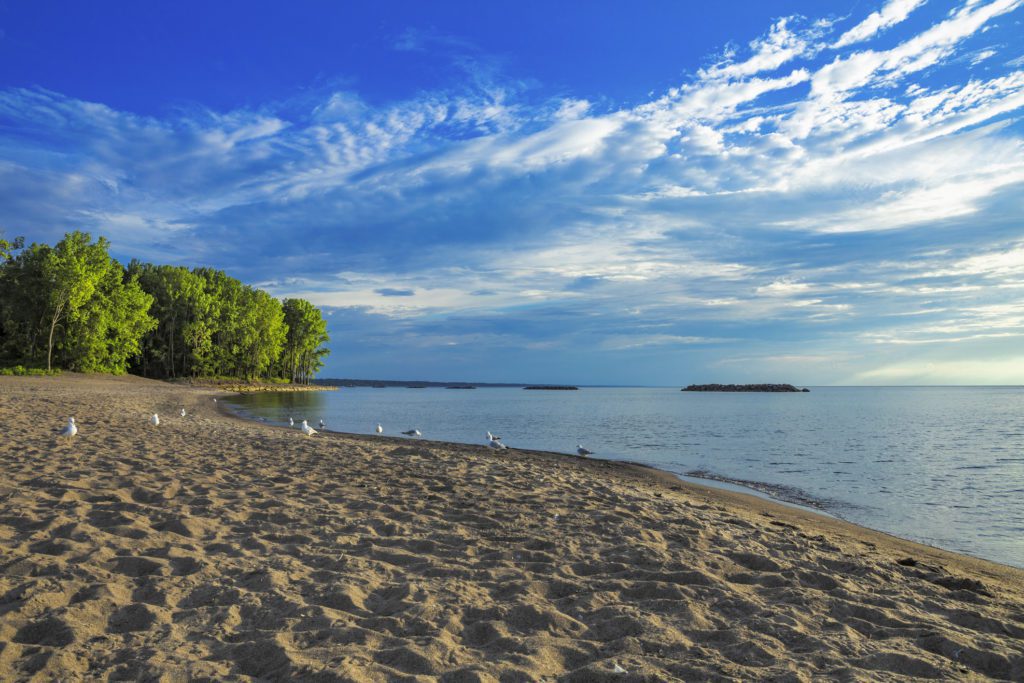Canada and Ontario recently signed an important agreement about the Great Lakes: The Canada Ontario Great Lakes Water Quality and Ecosystem Health Agreement, or COA for short. COA was established 50 years ago so that the federal and provincial governments could work together to ensure that these awe inspiring bodies of water are protected for generations to come.

Back in 2019 during the renegotiation process, Environmental Defence along with the Canadian Environmental Law Association made recommendations on ways to improve the draft Agreement.
So how do the commitments made in the new Agreement compare to what we asked for? Let’s take a look at the key areas where we made recommendations.
Indigenous governance

While we’re glad to see that Indigenous people will continue to be offered a seat at the table for important COA discussions and meetings, overall these commitments fall short. The lack of proper acknowledgement of Indigenous Peoples continues to perpetuate the idea that First Nations and Métis are merely stakeholders rather than the sovereign rights-holders and title holders that they are. The government also needs to be accountable regarding the level of funding commitment that they provide to First Nations and Métis.
Setting ambitious, clear goals and reporting back on progress

The Canada-Ontario Lake Erie Action Plan (COLEAP) was published in 2018 and only now are we seeing an interim timeline of 2023 given for a progress report. Even more problematic is that this timeline doesn’t leave much room for error. If in 2023, these progress reports reveal that the government has fallen behind meeting their 2025 targets, they will be left with just two years to ramp up action.
Funding

Despite ongoing calls from advocates for increased transparency, accountability, and concrete funding commitments, funding remains a problem for COA. Without guaranteed yearly funding from each level of government, COA is left vulnerable.
For example, under the 1994 Agreement the estimated cost for all three levels of government was over $2.5 billion. We asked for Canada to commit to a minimum of $100 million per year and for Ontario to make a significant annual funding commitment as well. We are disappointed that no such concrete funding commitments were provided in the 2021 Agreement.
Nutrients

Nutrient pollution is a major issue for the Great Lakes, particularly for the Lake Erie basin. Excess nutrient pollution from phosphorus (which comes primarily from agricultural runoff) is a key driver in causing toxic algae blooms. These blooms cause serious issues such as unsafe drinking water and an unswimmable lake. We are pleased to see that the new Agreement provided a timeline to develop phosphorus management plans for Lake Erie priority watersheds by 2022. What we really need now though are reduction targets for these phosphorus management plans. Without targets, we have no meaningful goal to measure our progress against for achieving phosphorus reductions in the Lake Erie basin . Having a target will help us plan and invest accordingly in order to meet our goals.
Harmful Pollutants – Plastics

Roughly 10 million kilograms of plastic enter the Great Lakes each year. The commitments made regarding an Extended Producer Responsibility program and model are welcome. However, the reality is that the targets for plastic recycling are too low with the new Ontario Blue Box regulations. The new regulations exempt “compostable” plastics from Producer Responsibility. None of the “compostable” plastics can actually be composted by any current municipal composting system, meaning these will end up in incinerators, landfills, and waterways. And while capture and clean up projects help to remove plastic from entering waterways, they do not solve the root cause of the overwhelming production of new plastics entering the market.
With regards to including thermal treatment as an option for dealing with plastic, this completely ignores the science of plastic pollution. Burning plastic releases toxic pollutants into the air and encourages the production of more and more virgin plastics. All Incineration does is turn plastic into polluting gases and solids.
Lastly, a deposit return program is a proven best practice that can recover over 90 per cent of containers sold. To not include it in the Agreement is clearly a missed opportunity.
Harmful Pollutants – Chlorides

Chloride pollution (usually the result of overuse of road salts) has become a serious issue for the Great Lakes basin. High chloride levels threaten freshwater species that cannot survive in water that is too salty. The province has failed to establish a Provincial Water Quality Objective. This means the province will continue to lack the proper guidance needed to see meaningful reductions in chloride pollution. Without this kind of objective, it will be difficult for us to measure progress. Efforts to work with municipalities and the private sector to reduce their heavy-handed approach to road salt application will also be undermined without any provincial objectives or incentives.
Other noteworthy Annexes in the 9th COA Agreement
Stormwater and wastewater management
The addition of stormwater and wastewater management as an Annex is a welcome move that will help address the urgency of investing in stormwater and wastewater infrastructure across Ontario. The Government of Canada has also established the Green Infrastructure Fund under the Investing in Canada Infrastructure Program. This funding can support public infrastructure projects such as stormwater and wastewater infrastructure. One weakness of this fund is that the stormwater infrastructure is invested mostly in grey-infrastructure (e.g., more sewers). Minimal investments have been made in natural infrastructure and green stormwater infrastructure (e.g., bioswales, permeable pavement, green roofs, wetlands, vegetative strips alongside roads). Governments need to accurately define green infrastructure so that investment in green infrastructure is accurately reflected.
Climate Change Annex
The Agreement talks about:
- Improving our understanding of climate change in the Great Lakes
- Assessing existing and future vulnerabilities
- Integrating climate change into Great Lakes management strategies
- Sharing climate change information
- Helping communities build climate change resilience and adapt to climate change.
However, meaningful climate change action within the Great Lakes region will continue to be undermined as long as the government continues to prioritize investing in fossil fuels over renewables. It must also aggressively support efforts to lower GHG emissions from fossil fuel intensive industries and other major sources such as animal agriculture.
Final thoughts

While there is reason to celebrate certain aspects of the 9th COA, we’re disappointed that certain elements remain vague, lacking concrete targets and funding commitments. These shortcomings mean it will be difficult for the public to assess the progress we are making over time. It will also be challenging to determine if we are providing enough funding to support the actions and work needed to meet the Agreement’s objectives. We must continue to push the federal and provincial governments to meet commitments and properly fund the work and actions that are needed. Anything less will fall short of what’s really needed for the Great Lakes.









